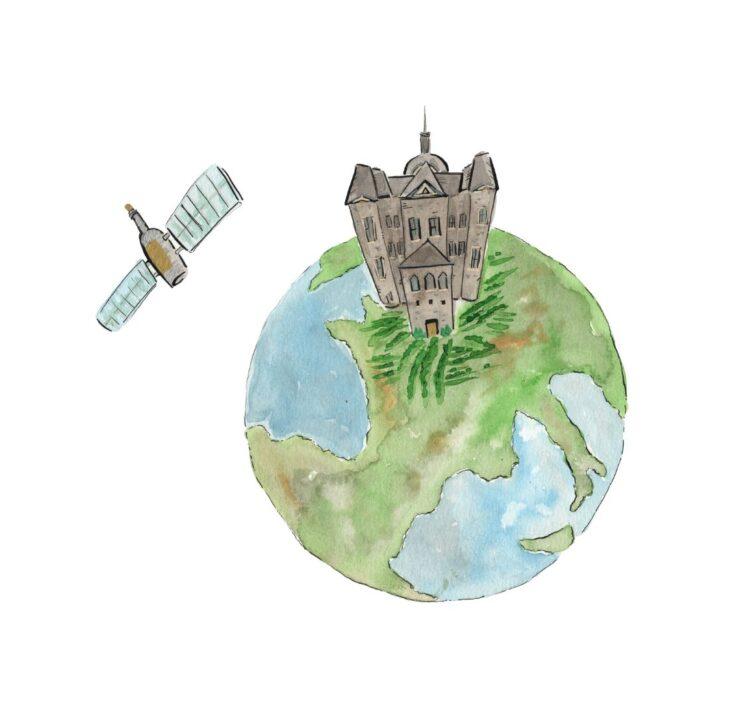Reading Old World wine labels can be a confusing and sometimes frustrating experience. They contain few details about the wine — and what little information is on the label is often not in English. Enter wine classification systems or, instead, perplexing acronyms — like AOC, DOC, or IGT — that not only reflect the quality level of a wine but also regulate yields, vineyard areas, and more. They embody the cultural and historical intricacies of European wines. For the uninitiated, deciphering these classifications can feel like trying to solve a cryptic crossword in a foreign language.
Wine Classification Systems Summarized
In 2009, the European Union established a system for all its countries to use to ensure quality consistency. It allowed these countries to bring together various ideas for quality into one harmonious set of rules.
The EU’s system divides wine into two parts: those with and those without a geographic region. Wines without are usually vino, Vin de France, or other designations that demonstrate that the wine can be from anywhere in the country, often replacing the term “table wine.”
Wines from within a geographic region (such as Bordeaux or Piedmont) further divide into two more categories: Protected Geographical Indication (PGI) and Protected Designation of Origin (PDO). PGI wines have few regulations regarding traditional grape varieties and highlight a specific quality or characteristic that winemakers can specifically attribute to the area. Additionally, at least one stage of production must take place within the area. PDO wines have more regulations, often pertaining to traditional grape varieties and production techniques. The entire winemaking process must happen within the region – from the grape growing to bottling.
Each country can create its own version of this system. Sometimes, that simply means translating these terms into their language (for example, PGI becomes IGP in Portugal.) But sometimes, like in Germany, the system can get much more complicated.
France
Though regions across France have separate classification systems, such as Bordeaux Superior or Grand Cru wines in Burgundy, France mainly uses the EU’s system, translated into French.
Their bottom tier is Vin de France, or often just vin. These wines come from anywhere in the country and do not have specific regulations on the grapes’ origins. Classifications aren’t always a measure of quality, but Vin de France is typically the lowest quality in the country.
Above this is Vin de Pays, or “wine of the country,” France’s PGI level (Indication Géographique Protégée in French). There are 150 IGP designations in the country across 74 geographical areas.
The highest level for France is AOC or Appellation d’Origine Contrôlée, which is their PDO level. The term “Contrôlée” refers to the fact that this level is governed by the Institut National de l’Origine et de la Qualité (INAO), which reviews AOC wines to ensure quality.
Rules can get pretty strict at the AOC level. For example, Champagne AOC ordinances state that no sparkling wine can use “Champagne” on the label unless the grapes come exclusively from the Champagne region. While not every country vigorously guards its labels like this, rules like these are how some of the best wine in the world keeps their quality consistently high.
Italy
Italian classifications are similarly strict to ensure its regions remain top-tier.
At the bottom of the pyramid is Vino da Tavola (VdT), or “table wine,” which are wines from anywhere in the country. The next level up is IGT or Indicazione Geografica Tipica. This level was developed in 1992 to classify premium wines that didn’t fit the classic, historic nature of the PDO wines.
“Super Tuscans” are a great example of this idea. In the 1960s, producers in Tuscany began experimenting with French grapes and developing Bordeaux-style blends. Because of the strict rules of DOC and DOCG wines of the PDO level, the only option was to consider these wines VdT. However, many recognized that the quality of these wines was beyond a typical VdT wine, so the IGT level was established to recognize this and other wines that focus on international varieties.
The top tier for Italy includes DOC and DOCG. DOC, or Denominazione di Origine Controllata, is the classification level for most of Italy’s wines, with 330 DOC areas. DOC wines have strict rules about grapes and location and are reviewed by a government-led panel. DOCG wines, Denominazione di Origine Controllata e Garantita, have even more stringent rules, exemplified across 77 DOCG areas in Italy.
Germany
Germany’s classification system may be the most complicated of all Old World countries. Across Germany’s 13 regions, the wines and wine regions break down into several categories beyond the EU’s system.
Germany has three levels to start. Deutscher Wein is the country’s version of table wine and generally has no strict rules or designations of origin. Above that is Landwein, which is Germany’s PGI level (or g.g.A in German) and consists of 26 regions. With a few exceptions, grapes must come from within the region and be dry or semi-dry.
At the PDO level, things get a little more complex. There are two PDO categories, Qualitätswein and Prädikatswein. Within the Prädikatswein level are six categories, with increasing Öchsle degrees, which measure the density of the grape to indicate ripeness or sugar content. From dry to sweet, those levels are:
- Kabinett
- Spätlese
- Auslese
- Beeranauslese
- Eiswein (Ice wine)
- Trockenbeeranauslese
The Qualitätswein system narrows from winegrowing area to region to village to vineyard. At the vineyard level, wines are classified by the vineyard name, then Erstes Gewächs (Premier Cru), then Großes Gewächs (Grand Cru), which include some of the finest wines in the country.
Spain
The full classification system for Spain is relatively new. For instance, the top category, Vino de Pago, only came into existence in 2003.
Otherwise, the system is very similar to France and Italy. It begins with Vino de España, which is the country’s table wine category. Like Italy and the Super Tuscan category (IGT), some winemakers choose to declassify their wines to this level to take advantage of the flexibility of grapes and nontraditional winemaking techniques. As a result, high-quality wines can come from any level in Spain.
The next level is Vino de la Tierra (VT), Spain’s PGI level. There are 42 VT wine areas, which have regulations for the origin of the grapes while keeping some flexibility for winemaking.
Spain’s PDO level includes four levels. The first is Vino de Calidad con Indicación Geográfica (VC), which is more or less a stepping stone to achieving DO (Denominación de Origen) status. After five years, VC wines can apply for DO status.
At the DO and DOCa (Denominación de Origen Calificada) levels, strict standards for winemaking, grapes, production levels and aging apply. DOCa is the highest level possible for appellations in Spain, which only two hold: Rioja and Priorat.
The last level, Vino de Pago, is exclusively for single estates under distinctive conditions representative of their area. Currently, there are only 24.
Portugal
Portugal is a country that is having a moment in the industry. Consumers and professionals are realizing the country has more to offer than Port.
Their classification system is straightforward and easy to understand, especially since the country is small compared to others. Their bottom level is vinho, which is simply Portuguese for “wine.” However, you won’t see many of these wines outside of Portugal.
Their IGP level is Vinho Regional, which includes 14 regions and is more flexible than their top tier. The top tier, Denominação de Origem Controlada (DOC), puts strict guidelines on grapes and vine yields to control quality. The Comissão Vitivinícola Regional oversees this level.
Austria
The Austrian system largely follows the German one. It begins with wein, which replaced Tafelwein, Austrian for “table wine.” At the PGI level is Landwein, which implies the wine has a geographical indication, though winemakers can not specify that area on the label.
The Austrian PDO level combines the Qualitätswein and the Prädikatswein levels from Germany into one Qualitätswein category. That level includes Qualitätswein as a category (also known as DAC or Districtus Austriae Controllatus), then all of the Prädikatswein categories (Kabinett, Spätlese, Auslese, Beerenauslese (BA), Trockenbeerenauslese (TBA), and Eiswein). It also adds a level, Ausbruch, between BA and TBA, the most popular of which is Ruster Ausbruch DAC, which comes from the western shores of the Neusiedlersee. It also includes Strohwein (aka Schilfwein), which is similar to Italy’s appassimento wine, where bunches of grapes are laid out on beds of straw or reeds during winter to concentrate sugars.
New World Wine Classification Systems
In contrast to the Old World, New World winemaking countries generally avoid traditional wine classification systems. Instead, they often embrace a more flexible and straightforward approach to wine labeling. Countries like the United States, Australia, Chile, and New Zealand prioritize transparency and varietal expression over rigid regulations.
New World wines often prominently display the grape variety on the label. This transparency caters to a global market where wine drinkers seek specific flavors and characteristics associated with particular grape types.
Furthermore, New World regions are known for their experimental spirit, encouraging winemakers to explore innovative techniques and blends without being bound by strict appellation or classification rules.








